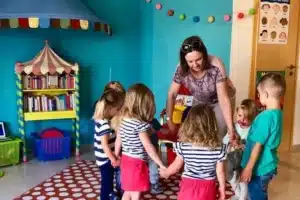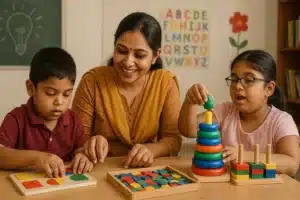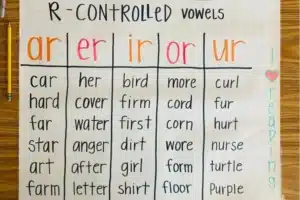
Recognizing the impact dyslexia has on children in daily activities can aid parents and educators in providing more appropriate assistance. Real-life examples vividly illustrate the signs of Dyslexia Examples, which go beyond designated reading problems and verbs. Struggling to follow directions, mixing up letters and words, these for grade level, these examples vividly demonstrate the real-life challenges many children face both in school and at home. Understanding these situations enables adults to respond thoughtfully and with the patience, proper regulative praise, and inspiration necessary for children to thrive.
Unexpected Ways Dyslexia Shows Up
Dyslexia, also known as the reading disorder, has been associated with reading challenges. However, dyslexia has a far-reaching effect on the child’s comprehension skills that can affect their communication and social skills gravely. Many signs are subtle, misunderstood, or ignored.
To download the brochure of the LD Course, Click Here!
For more details on the LD Course, Call/WhatsApp at +919321024137 / +919869866277
These real examples show how dyslexia can appear in ways that difficulties common beliefs:
Difficulty telling left from right
It will be a regular issue with the child always taking the wrong direction, even when he is given repeated instructions.
Poor organisational skills
A Dyslexic Child is always confused, leading to unfinished tasks, forgetting time limits, which happens due to poor sequencing and organising skills.
Mixing up similar words
Words like “was” and “saw” or “b” and “d” may get confused in speech or writing, long after peers have mastered them.
Faulty spelling
The child comes up with different spellings each time. For e.g, each time the child gives a different spelling pattern for the word “phone,” “fawn,” “Fon.”
Difficulty remembering instructions
A student forgets the different steps explained to him while doing a simple task. The above-listed examples are clear situations that explain that Dyslexia does not only affect reading or decoding letters. It unfortunately has a deeper impact on other life skills such as retention of information, time management skills, and even communication skills. When these difficulties are recognised, it helps to offer support in the right areas.
To download the brochure of the LD Course, Click Here!
For more details on the LD Course, Call/WhatsApp at +919321024137 / +919869866277
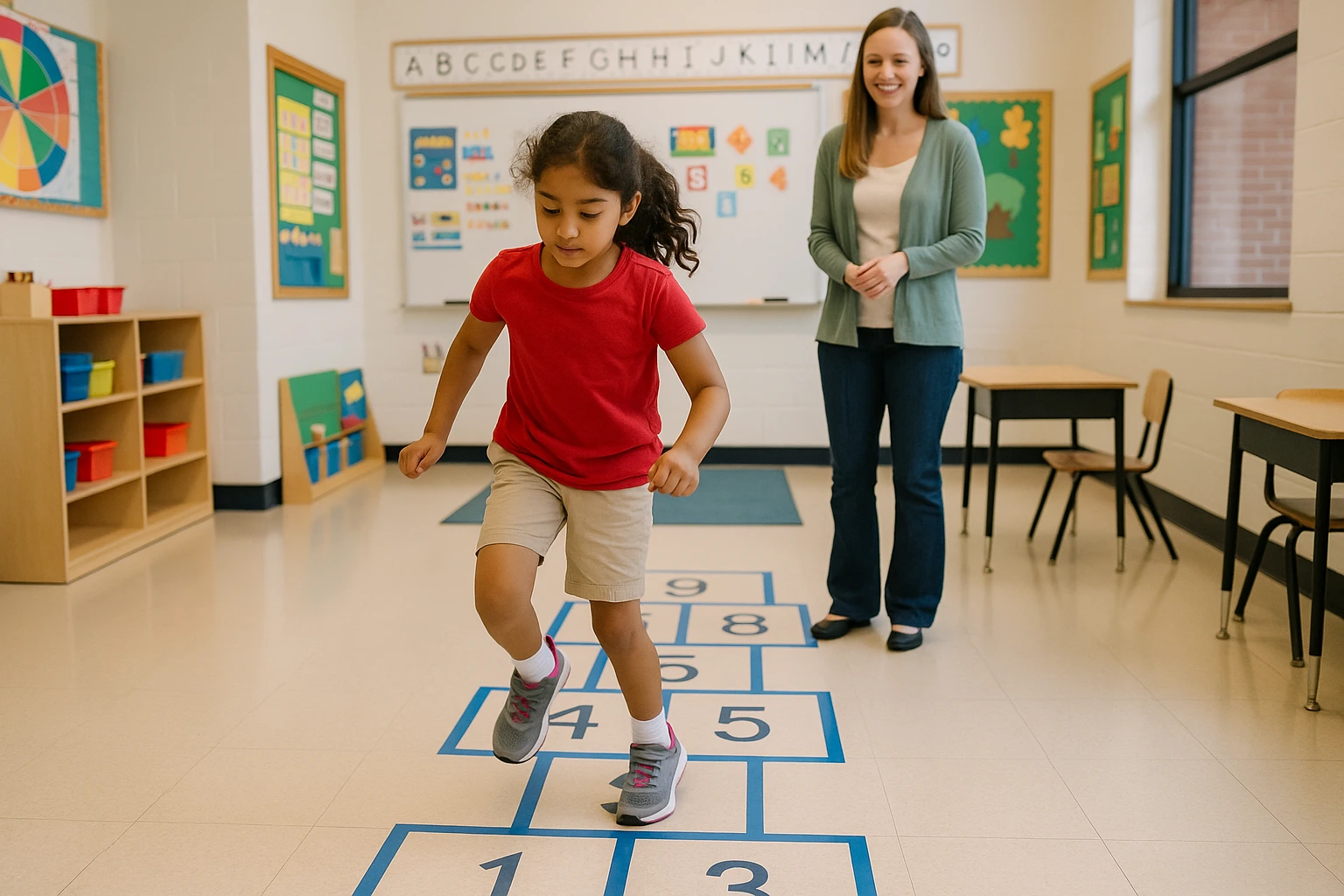
Stories of Children Who Found Their Way
Despite the challenges and struggles faced by children with learning disorders, through sheer determination, appropriate academic and emotional guidance, they navigate efficiently to make a sustainable path for themselves.
Listed below are some real-life examples of how adversities can be transformed into opportunities, establishing successful futures.
Neerav, age 9
Neerav, a child who preferred being all alone, was introduced to the wonderful method of a phonics-based reading approach. This brought about a 360-degree change in his overall attitude, making him confident to read independently in the classroom with great fluency.
Sameera, age 7
Sameera, an ADHD Child, could not focus or sit in one place. Her breakthrough happened when she was guided to learn through movement. The teachers used strategies to design corners in the classroom where she could move around and concentrate for a longer duration.
These stories are a reflection of the child’s and the teacher’s joint dedication, patience, and customised lessons that helped them address their target areas of concern and attain realistic goals, making success a highly achievable reality for them.

Simple Strategies That Made a Big Difference
Bigger achievements are possible when small steps are taken consistently and followed up to ascertain if the plans are working for the child. The exclusive strategies designed for the child help teachers as well as parents to ensure that the child’s progress in school is supported equally by enriched learning at home.
Using color-coded folders
One teacher assigned colours to each subject. A child with dyslexia found it easier to organize materials and reduce missed homework.
Breaking tasks into steps
A parent helped their child manage homework by splitting large assignments into smaller, timed chunks with breaks. This reduced stress and improved focus.
Reading with a finger or ruler
In class, a child who skipped lines while reading started using a ruler to guide their eyes. This simple tool boosted reading accuracy.
Incorporating movement
A boy who struggled to sit still learned spelling while bouncing a ball or walking in place, which helped him remember better.
Creating visual schedules
One family used picture charts for daily routines. Their child with autism began following steps independently, building confidence.
These small, thoughtful adjustments make everyday learning smoother. When tiny steps are taken and are pursued with constant efforts, it helps children conquer higher challenges with expertise and confidence.
To download the brochure of the LD Course, Click Here!
For more details on the LD Course, Call/WhatsApp at +919321024137 / +919869866277
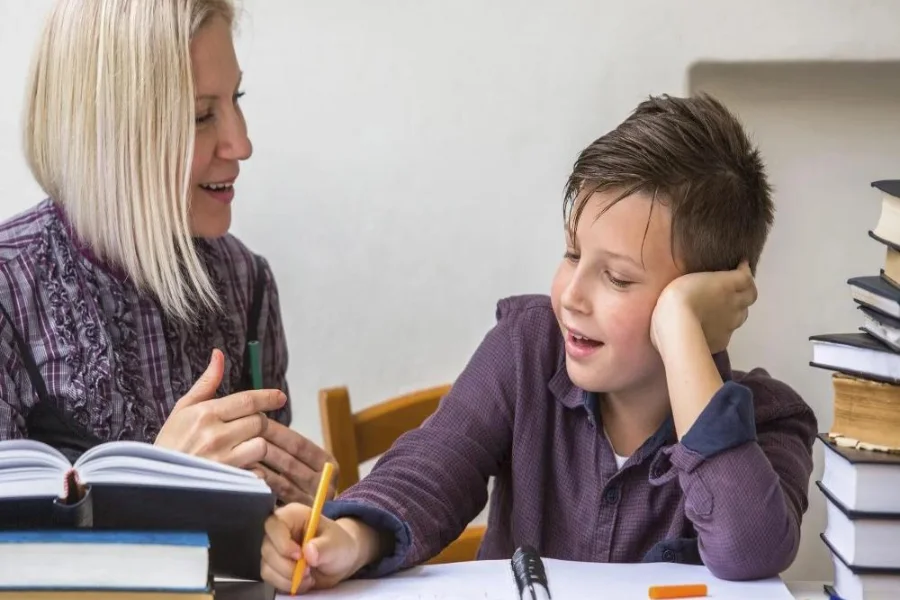
Source: study.com
Empowering Dyslexic Learners
To provide the precise support for a child with dyslexia, the first crucial step is to determine what are the problem areas of the child, and what his strengths are. Once these key aspects are assessed, it becomes easy for the educators to design lessons using teaching techniques that support the child’s learning with ease and comfort.
One of the most effective ways to gain this understanding is through professional training. A Learning Disability Course equips educators with practical strategies to help dyslexic learners overcome obstacles. Vidhyanidhi Education Society (Govt. Regd.) offers a Learning Disability Course designed to build these essential skills in a structured and accessible way.
Here are some proven methods to empower dyslexic learners:
Stimulate their sensory skills.
When children with dyslexia are taught using a combination of visual, audio, and sensorial teaching, it helps them understand and retain concepts for a longer duration.
Concise guidelines
When children are given simple and concise instructions, it helps their brains to retain the information better without being stressed.
Acknowledge and Reward
Always celebrate and acknowledge the tiniest milestone achievement of the child, encouraging them to try harder.
Reading support tools
Using audiobooks, reading apps, or text-to-speech software enables dyslexic learners to access content without frustration.
Structured routines
When the child is used to following systematic routines, there are very less chances of the child being fidgety or unfocused.
Educators who have undergone rigorous training under a Learning disability program are better equipped to notice any warning signs that hint towards the child possessing any learning disabilities. Educators possess the ideal skill set, combined with in-depth knowledge of strategies and an empathetic nature, that makes a classroom highly inclusive for all.
Vidhyanidhi Education Society (Govt. Regd.), a pioneer Institute with over decades of expertise, has launched a top-notch learning disability program that has certified candidates to create a stable, enriching yet bankable career in the field of Special Education, making a strong impact on the betterment of young children.
When the child’s IEP is designed with their key strengths in mind, dyslexic learners are better prepared to handle their reading and academic challenges effectively. With constant guidance and consistent tracking of progress, the child not only thrives academically but also builds high self-esteem, empowering him to attain greater heights of success.
Join Vidhyanidhi Education Society’s LD Course today to empower young minds!
To download the brochure of the LD Course, Click Here!
For more details on the LD Course, Call/WhatsApp at +919321024137 / +919869866277
Dyslexia Examples
FAQs
How can I assist my child who has dyslexia?
By undergoing a SPED program to gain knowledge of the precise support my child needs, I can assist my dyslexic child and aid his academic progress, and foster his social skills.
What strategies work best for teaching learners with dyslexia?
Making use of phonetics-based reading, using visual organisers, and incorporating multi-sensorial methods works best for children with dyslexia.
What steps do teachers take towards fostering a positive classroom culture?
The Vidhyanidhi Education Society’s Learning Disability Course trains teachers to use positive feedback and lesson adjustments alongside clear systems to foster a productive classroom culture.

